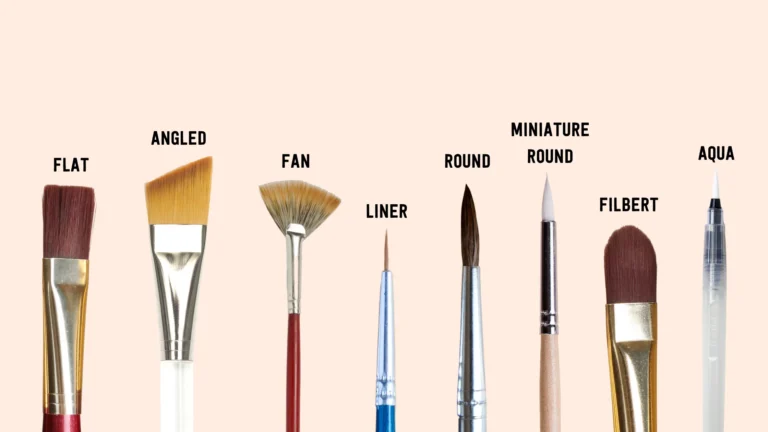You can ask any artist; the value of paint brushes is unmatched. They’re not just tools; they’re an extension of your hand. But if you’re new to painting, looking at all the different types of paint brushes can feel a bit confusing. Flat, round, angled… what do they all actually do? Don’t worry; that’s exactly what this guide is for. Each brush type has its own purpose, and knowing when to use which one can completely change how your artwork or paint job turns out. So, in this post, I’ll walk you through the different types of paint brushes and their uses in the simplest way possible. The next time you pick up a brush, you’ll know exactly which one to grab for your next project.
Flat Brush
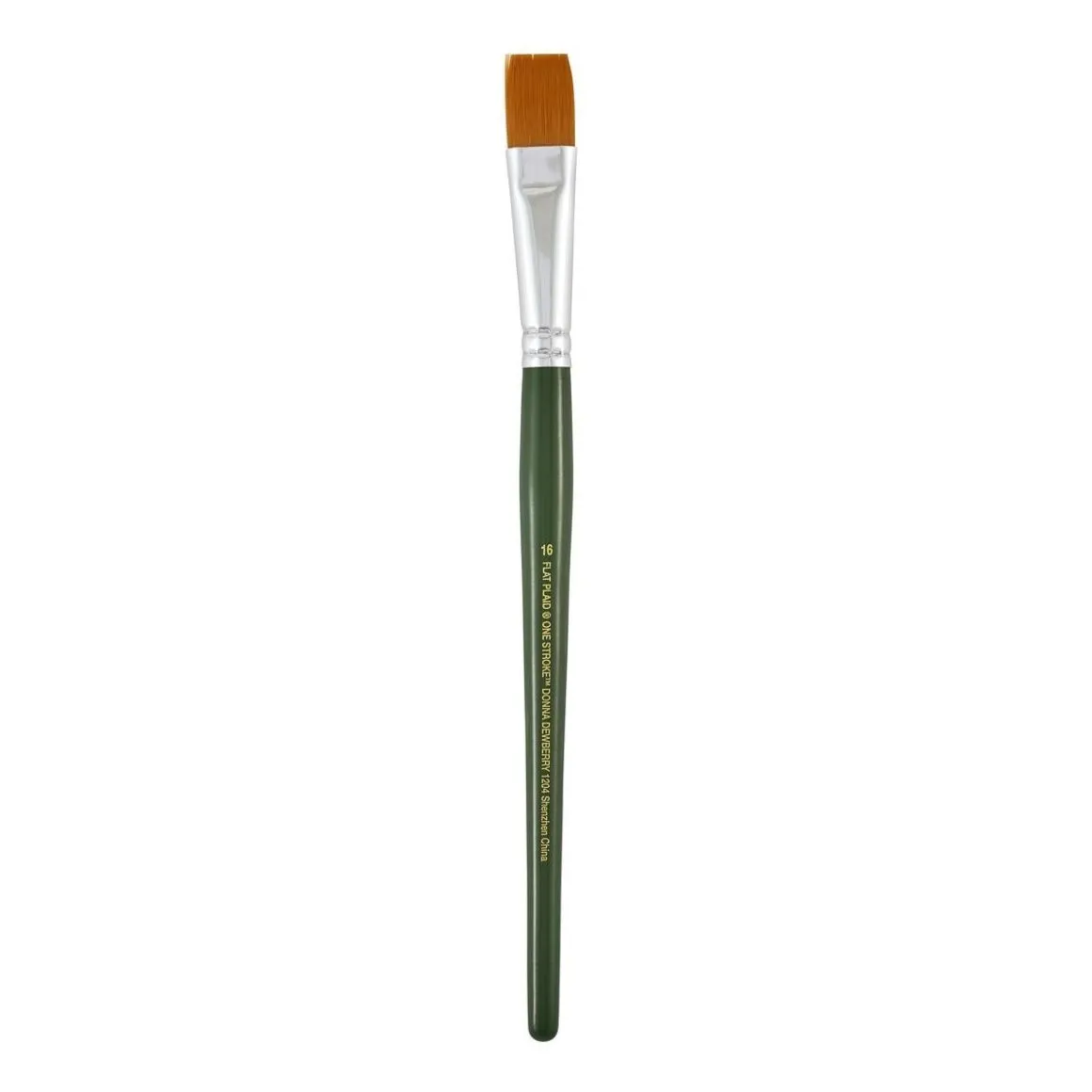
Credit: plaidonline.com
Let’s start simple. The flat brush is the wide one with straight, flat bristles. You’ve probably seen it in every paint set or hardware store.
What it’s for
Flat brushes are your go-to for covering big spaces — walls, tables, canvases, you name it. They give nice, smooth strokes and help spread the paint evenly.
How to use it
Dip your brush only about halfway into the paint — no need to dunk it! Use long, even strokes going in one direction. You’ll notice the finish looks cleaner right away.
Why it’s useful
It’s perfect when you need a solid, even coat. Plus, the edge of the brush works great for trimming or painting along straight lines.
If you’re investing in high-quality brushes for painting, make sure you get a good flat brush first; it’s one of the most-used ones in any painter’s toolkit.
Angled Brush (Cutting Brush)
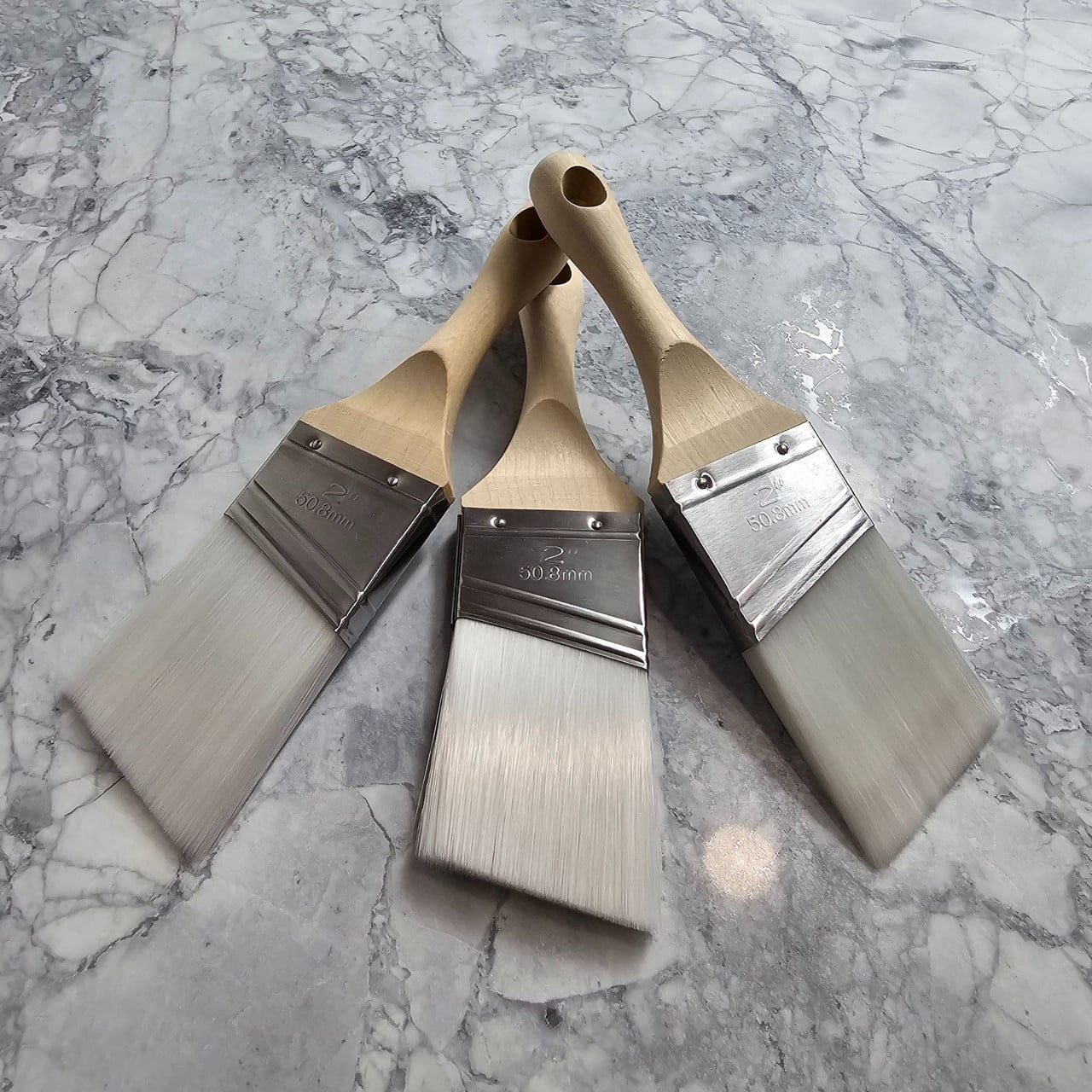
Credit: paintcouture.com
This one looks a little fancy; the bristles are cut at an angle. That slant helps you paint edges and corners without smudging.
What it’s for
Use it for “cutting in,” which just means painting around edges like ceilings, baseboards, or windows where rollers can’t reach.
How to use it
Hold your angled brush like a pen and move slowly, letting the angled edge do the work.
Why it’s useful
Once you get used to it, it’s a lifesaver for tricky spots. You’ll get professional-looking results with half the effort.
Round Brush
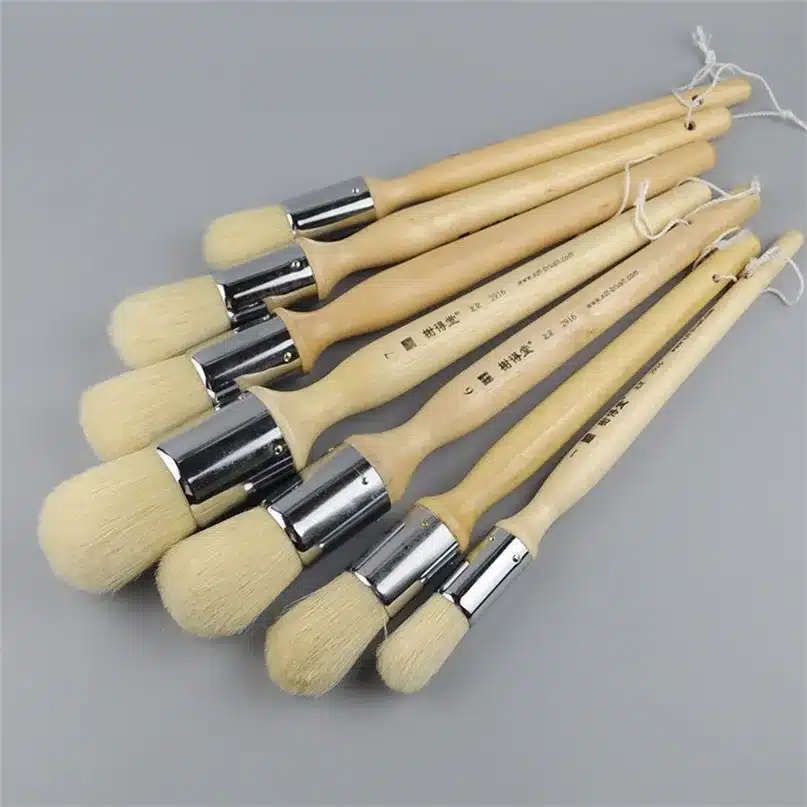
Credit: dhgate.com
A round brush is small and has a pointed tip. It’s great for detailed work or curved areas where a flat brush feels clumsy.
What it’s for
Perfect for outlines, touch-ups, and thin to medium lines. You can use it for both painting projects and art pieces.
How to use it
Press lightly for a thin line, harder for thicker ones. Rotate the brush a little as you go for smoother strokes.
Why it’s useful
It’s one of the most versatile brush types for painting because it gives you so much control. If you only buy a few brushes, this should be one of them.
Filbert Brush
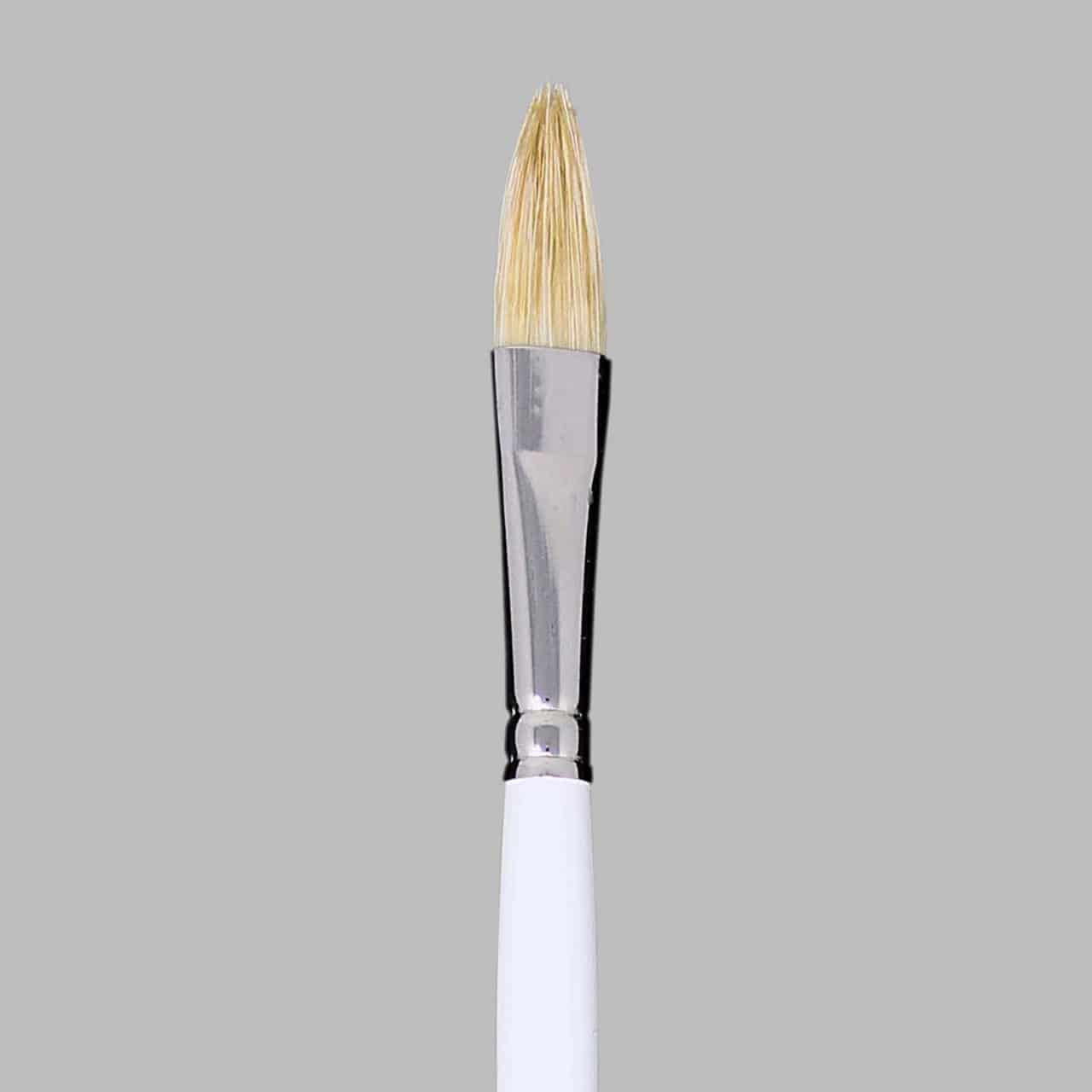
Credit: bobross.com
Think of the filbert brush as the middle child between a flat and a round brush. It’s flat in the middle but has rounded edges.
What it’s for
It’s amazing for blending and painting soft, natural shapes, like petals, leaves, or faces. It gives smooth edges without harsh lines.
How to use it
Use the flat side to cover larger areas and the rounded edge for blending colors together. You’ll get a softer, more natural look.
Why it’s useful
It’s perfect for any project where you want smooth transitions. Artists love this one for portraits and shading.
Fan Brush
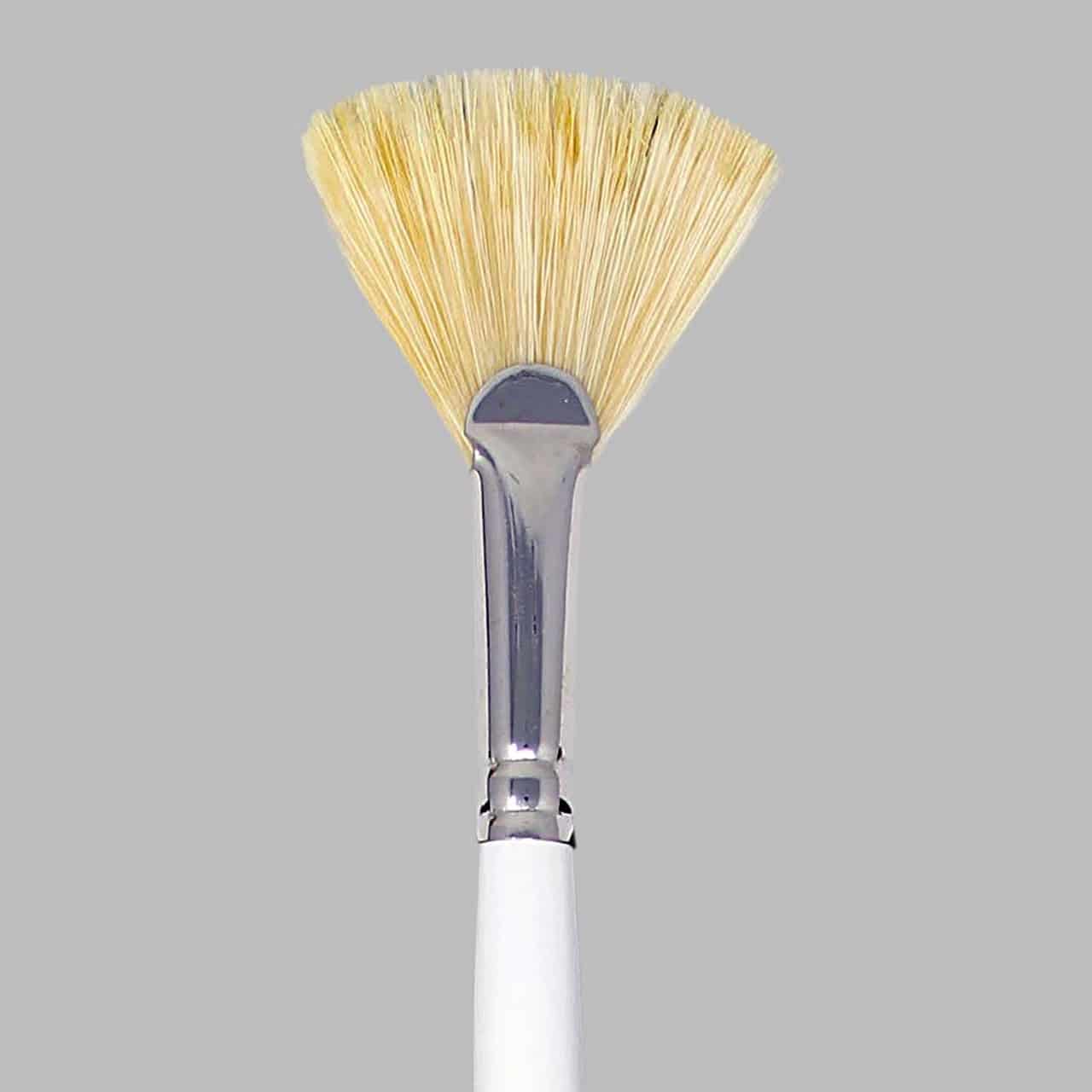
Credit: bobross.com
Fan brushes look exactly how they sound: spread out like a fan. They might look intimidating at first, but they’re super fun to use once you try them.
What it’s for
Creating texture! Great for painting grass, clouds, tree leaves, or even hair and fur. It’s also handy for blending backgrounds softly.
How to use it
Dip just the tips in paint and gently sweep across your surface. Light pressure gives a soft texture, while a bit more pressure makes thicker, bolder marks.
Why it’s useful
You can make something look detailed without trying too hard. Just a few swipes can turn a flat painting into a textured one. If you’re interested in learning more about how you can create textured walls with paint, check out our guide on textured wall paint techniques for even more ways to bring depth to your surfaces!
Detail Brush
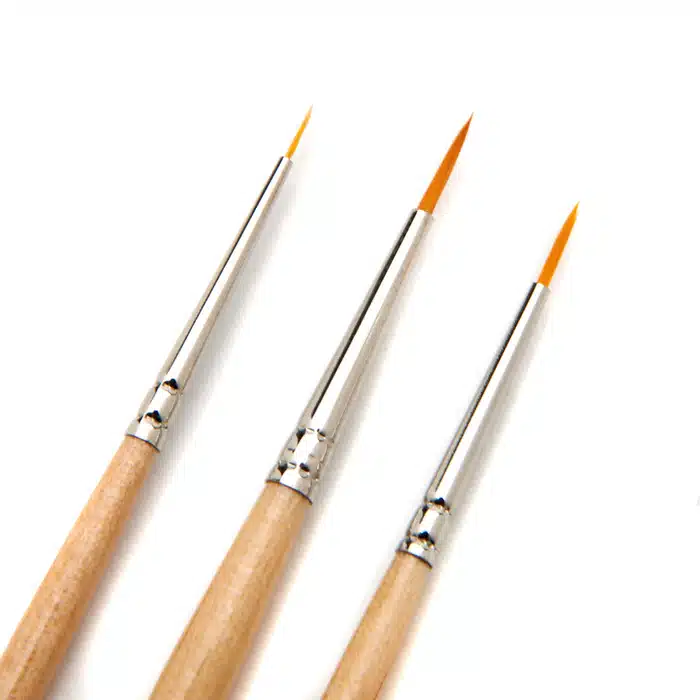
Credit: shop.aitart.us
This tiny brush has super-fine bristles; it’s made for when you need total precision.
What it’s for
Adding little details, highlights, or outlines. You can even use it to sign your painting at the end.
How to use it
Hold it close to the tip and go slow. If your hand shakes, rest your pinky finger on the surface to steady yourself.
Why it’s useful
Even though it’s small, this brush adds the finishing touches that make your work look neat and intentional.
Mop Brush
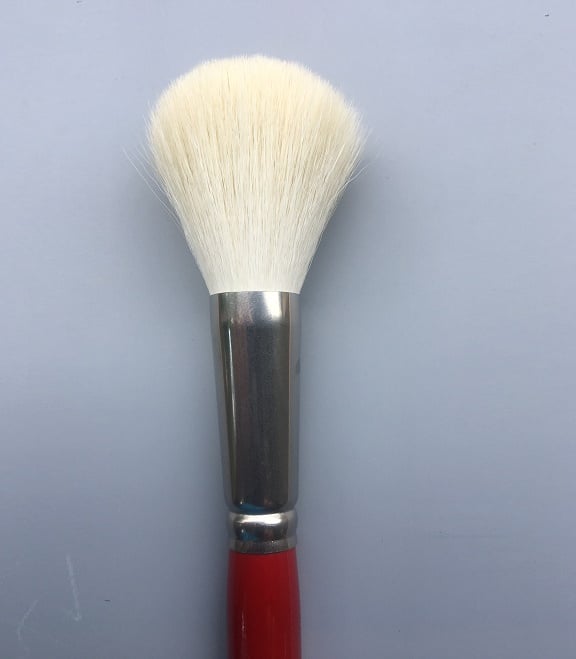
Credit: brushesandmore.com
A mop brush looks big and fluffy, kind of like a makeup brush. It’s soft and can hold a lot of paint or water.
What it’s for
Blending large areas, painting skies, or creating smooth backgrounds. It’s especially popular for watercolor or light acrylic work.
How to use it
Wet it slightly before dipping into paint, then glide gently over the surface. It’s all about light, sweeping motions.
Why it’s useful
It spreads paint evenly and helps you blend without leaving brush marks; great for smooth, gradient effects.
Bright Brush

Credit: indiamart.com
Bright brushes are like flat brushes, but shorter and stiffer. That gives you more control and stronger strokes.
What it’s for
Adding layers, texture, or visible brush marks in acrylic or oil paintings.
How to use it
Press firmly and use short, controlled strokes. The short bristles keep your lines neat while giving texture.
Why it’s useful
It’s a favorite among artists who like visible brushwork. It’s perfect for bold, textured painting styles.
Liner or Script Brush
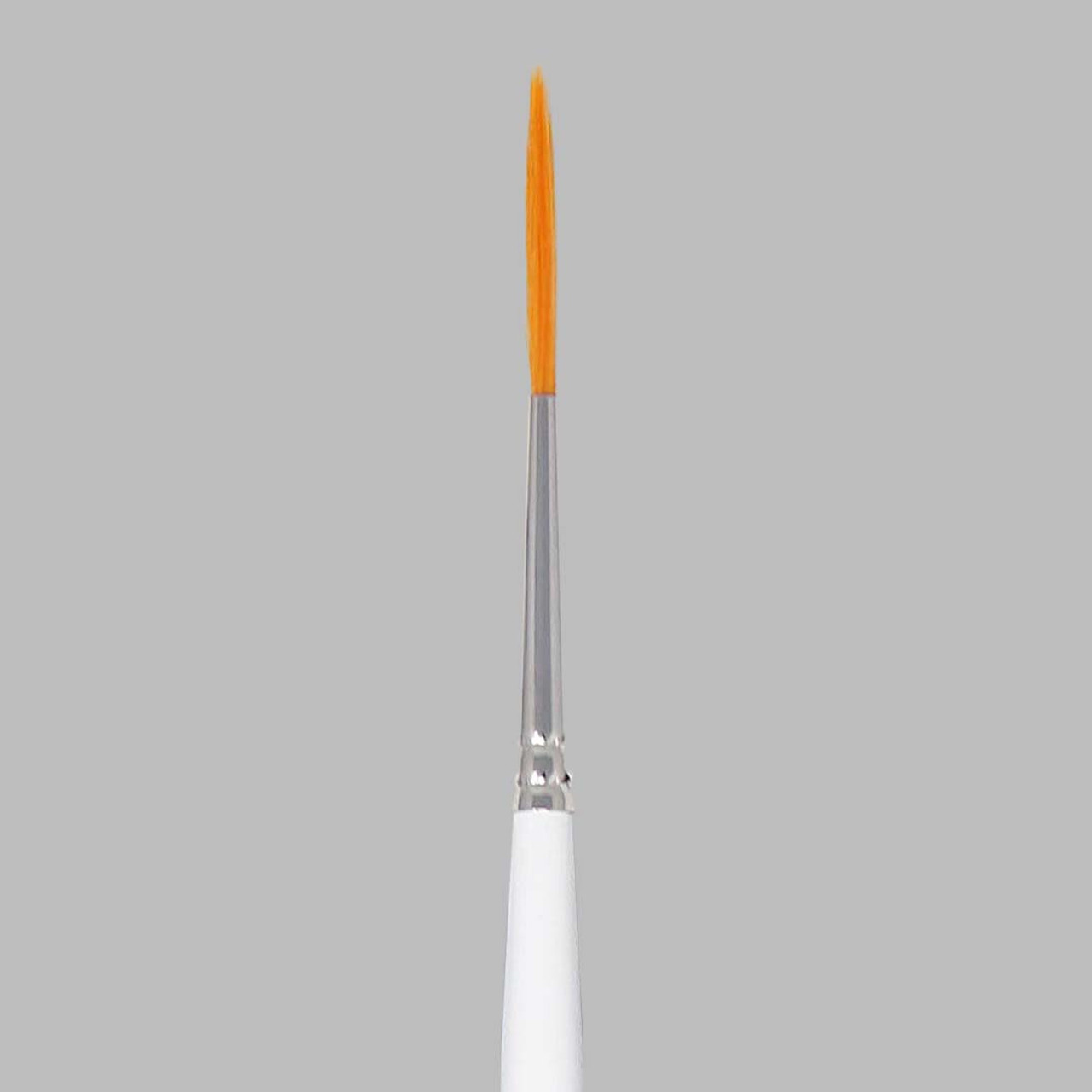
Credit: bobross.com
This one is long and skinny, designed for clean, flowing lines.
What it’s for
Outlining, painting lettering, branches, whiskers — anything that needs long, thin strokes.
How to use it
Thin your paint slightly with water so it glides easily. Hold the brush upright and move slowly and evenly.
Why it’s useful
You can get smooth, unbroken lines without lifting the brush, perfect for adding the final touches to your design.
Stencil Brush

Credit: anniesloan.com
A stencil brush is short, round, and firm. It’s built for tapping, not brushing.
What it’s for
Using stencils or adding dotted patterns. It’s great when you want sharp edges and no paint bleeding.
How to use it
Load a little paint, tap off the excess, then dab gently straight up and down over your stencil.
Why it’s useful
It keeps your edges clean and makes stenciling way less messy.
Chip Brush

Credit: amyhowardhome.com
The chip brush is the one you don’t have to worry about ruining. It’s cheap, simple, and surprisingly handy.
What it’s for
Applying glue, wood stain, or giving a rustic finish. Also great for creating texture effects in decorative painting.
How to use it
Use quick, loose strokes. Don’t worry about being perfect; the uneven texture is what makes it look cool.
Why it’s useful
If you’re working on a rough project or experimenting, this type of paintbrush gets the job done without stress.
Foam Brush
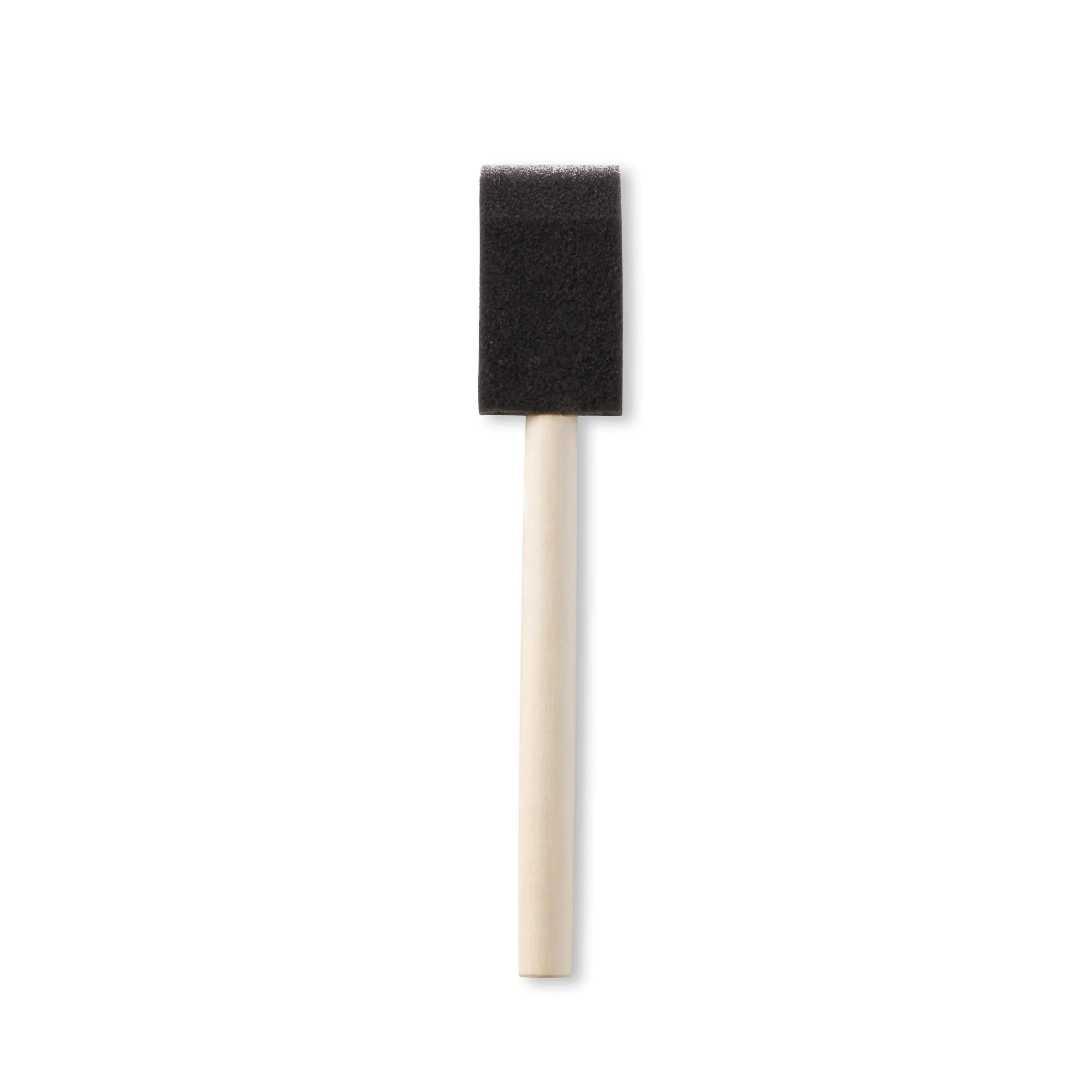
Credit: assets.michaels.com
This one’s not made of bristles at all; it’s a soft foam block on a stick.
What it’s for
Smooth surfaces, furniture, and crafts where you don’t want any brush marks.
How to use it
Dip lightly and use long, even strokes. Avoid pressing too hard, or you’ll get drips.
Why it’s useful
You’ll get a perfectly smooth finish, and when you’re done, you can just throw it away. No cleanup stress.
Synthetic vs. Natural Bristles
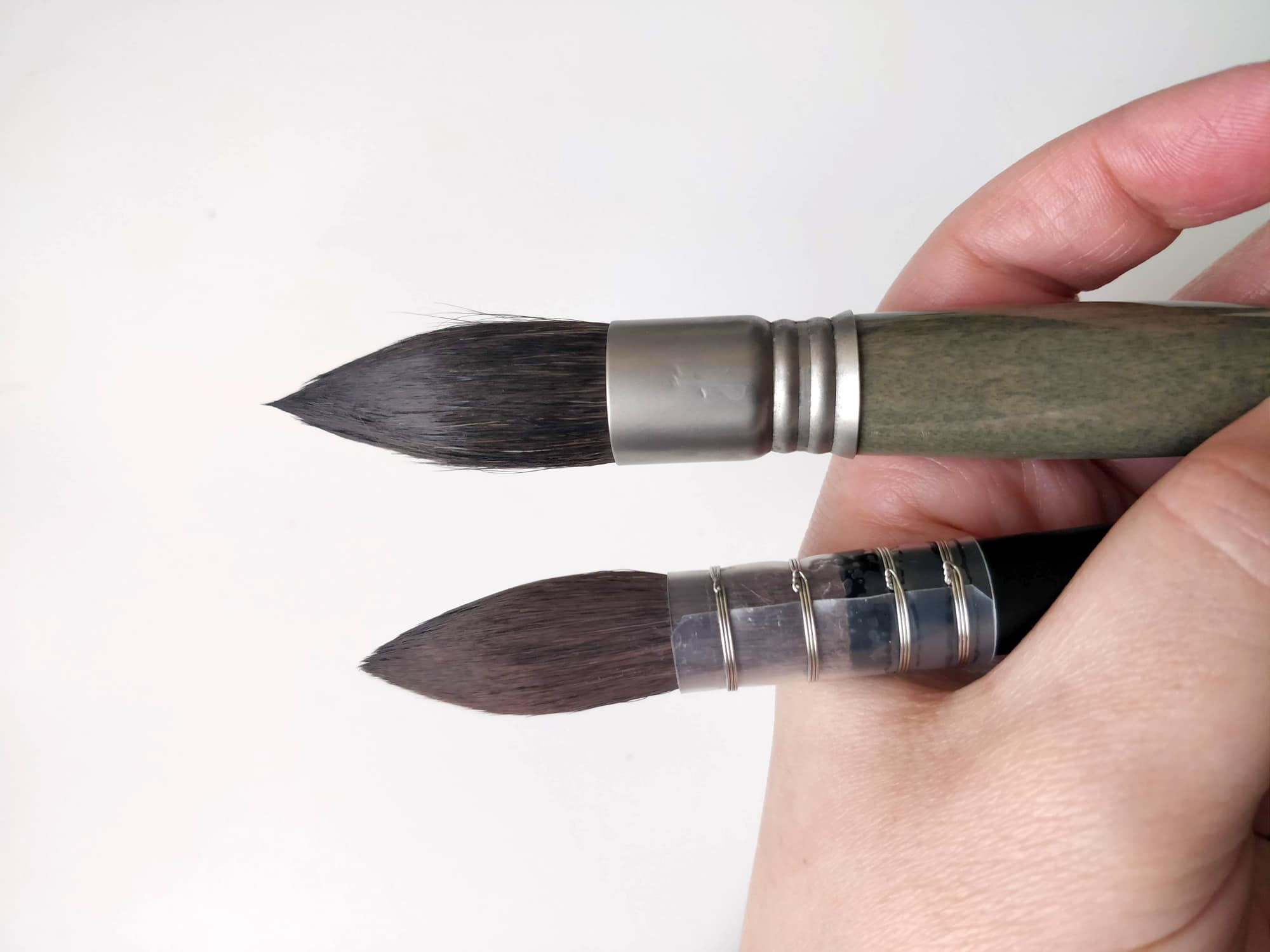
Credit: ursulaschichan.fr
Not all brushes are made the same. The use of a paintbrush changes a lot depending on what it’s made of.
Synthetic bristles (nylon or polyester)
- Best for water-based paints like acrylic or latex.
- They don’t swell or lose shape.
- Super easy to clean.
Natural bristles (animal hair)
- Great for oil-based paints and stains.
- Hold more paint, spread it smoothly, and give a softer finish.
If you care about long-lasting quality, go for better brushes; they make painting smoother and last much longer.
Caring for Your Brushes
A good brush can last years if you treat it right.
How to clean:
- Rinse them right after painting; don’t let paint dry in the bristles.
- Use warm water and mild soap for acrylics or latex paints.
- Use a paintbrush cleaner or mineral spirits for oil paints.
- Reshape the bristles while wet.
- Let them dry flat or hanging, bristle-down.
Tip: Never leave brushes soaking overnight. It weakens the glue inside and ruins the shape.
Buying Tips
When choosing between kinds of paint brushes, check for:
- Firm, flexible bristles that bounce back.
- No loose hairs falling out.
- A tight, rust-free ferrule (the metal part).
- A comfortable handle that fits your grip.
If you’re wondering about paint brush cost or painting brush cost, it really depends on quality. Cheaper brushes are fine for smaller, one-off projects, but investing in high-quality brushes for painting saves you money in the long run. Want to know which paint brushes give the best results and last the longest? Check out our guide on the best paint brushes for some top recommendations!
How Long Is a Paintbrush?
Ever wonder how long a paintbrush is? It depends on the type. Artist brushes are usually shorter, around 6 to 8 inches, to give you more control. House painting brushes can be longer, around 10 to 12 inches, for better reach and leverage.
Wrapping It Up
There you have it; all the main types of paint brushes and their uses. Each brush type plays its own role. Once you know which one to grab for each job, painting becomes smoother, faster, and more enjoyable. So next time you paint with a brush, try switching up the types you use. Take care of your brushes, clean them well, and they’ll stay with you for years.
Frequently Asked Questions
Still need answers for types of paint brushes and their uses?
How do I know which brush to use?
Think about your project. Big areas need flat brushes. Edges need angled ones. Tiny details need small round or liner brushes.
Can I use the same brush for every paint?
Not really. Use synthetic brushes for water-based paints and natural ones for oils. That’s how you get a smoother finish.
What’s the best way to clean a paintbrush?
Rinse right away with water or a paintbrush cleaner, depending on the paint type. Don’t let paint dry in the bristles.
Why is my brush leaving streaks?
You might be pressing too hard or using too little paint. Try softer strokes and a smoother brush.
How long can a good brush last?
With proper cleaning and care, even a better brush can last for years without losing shape.

